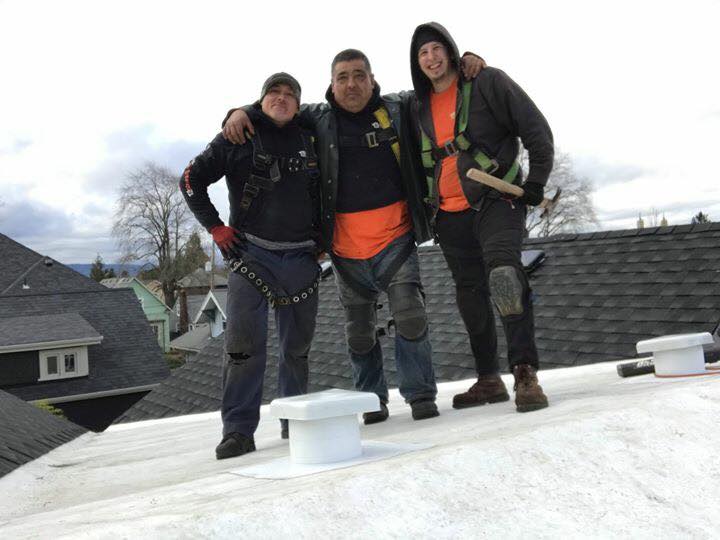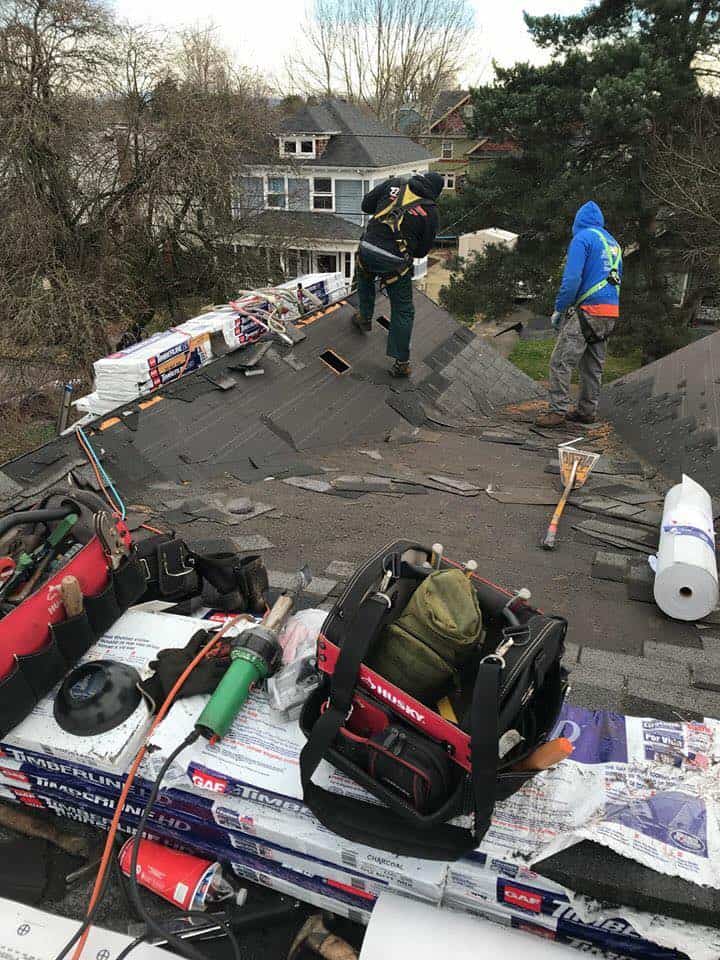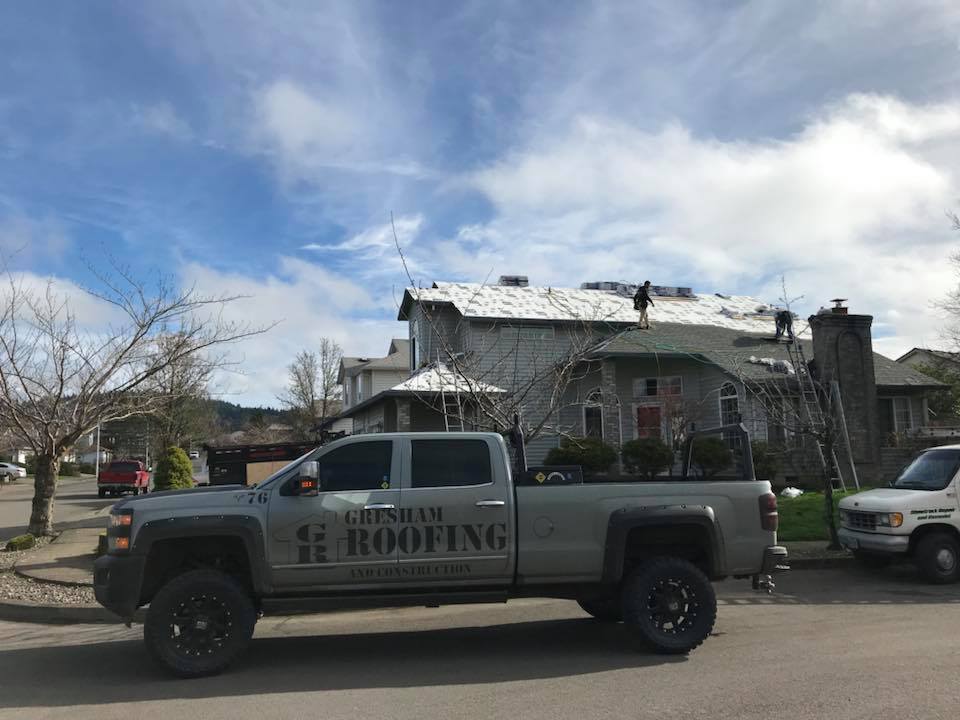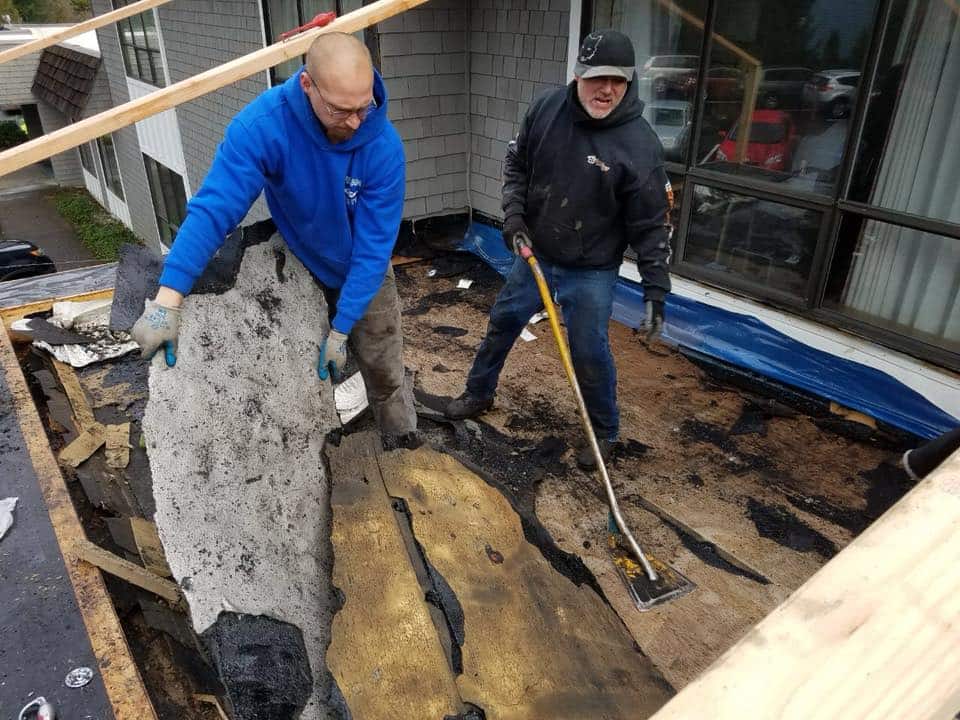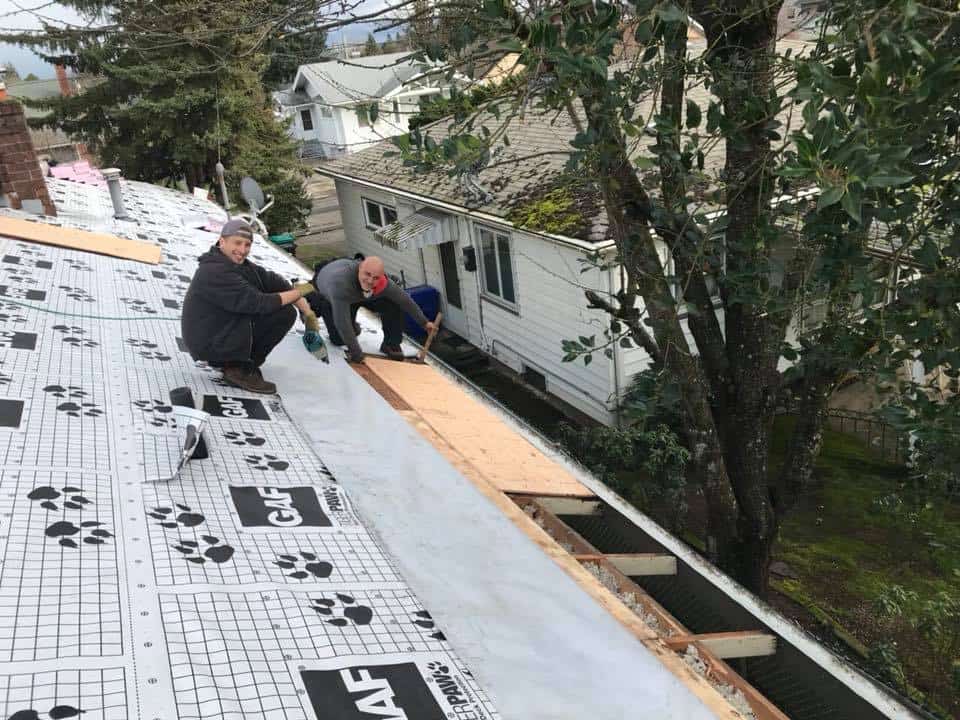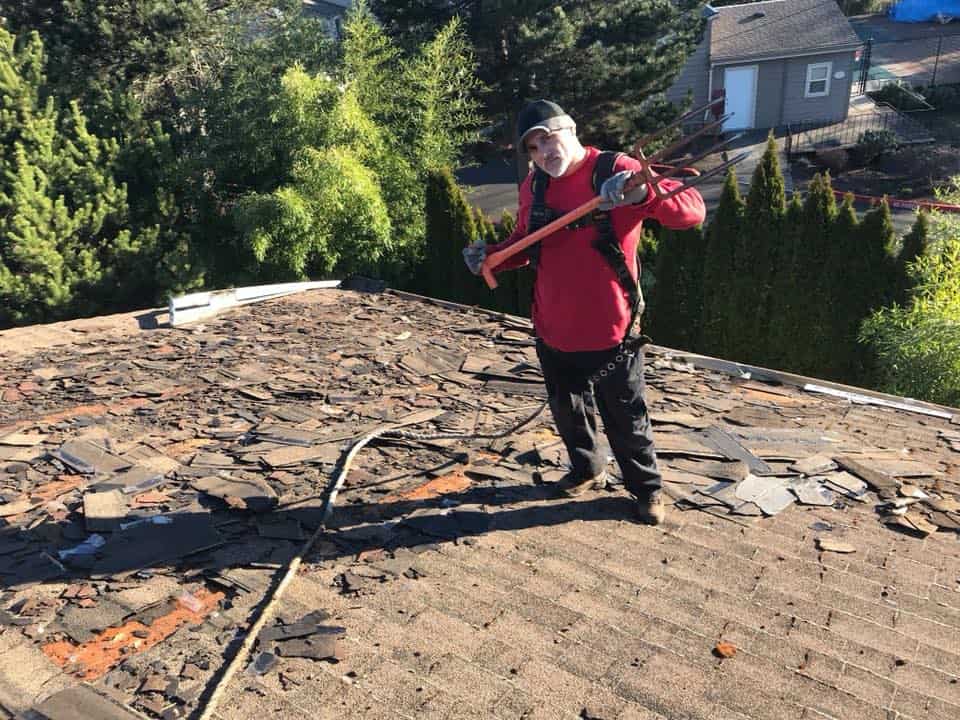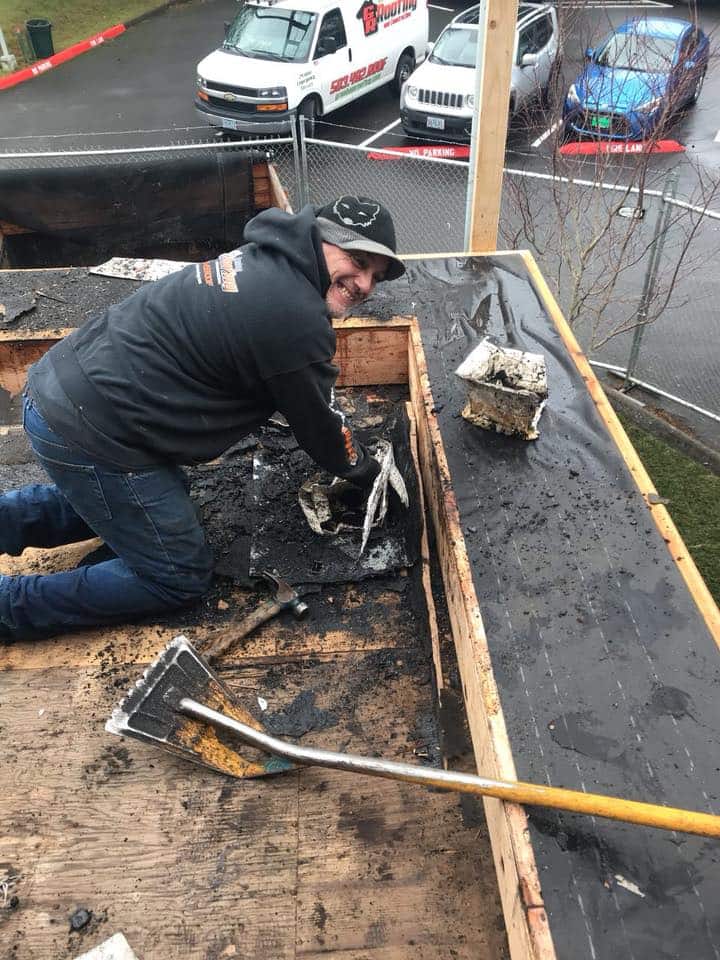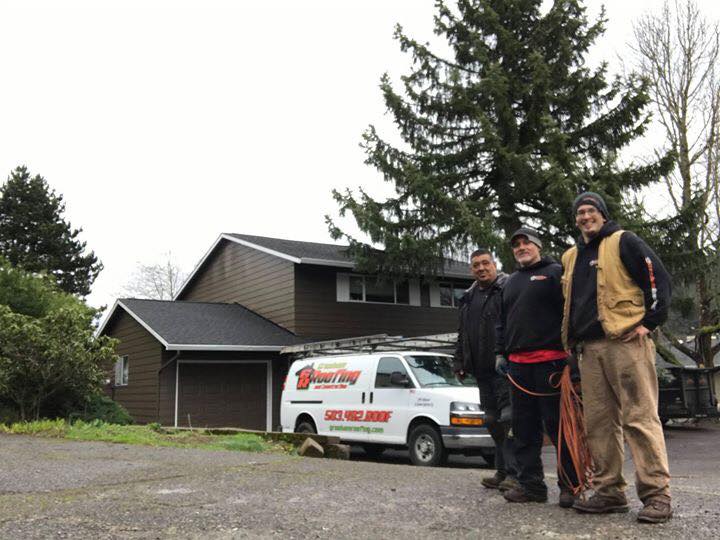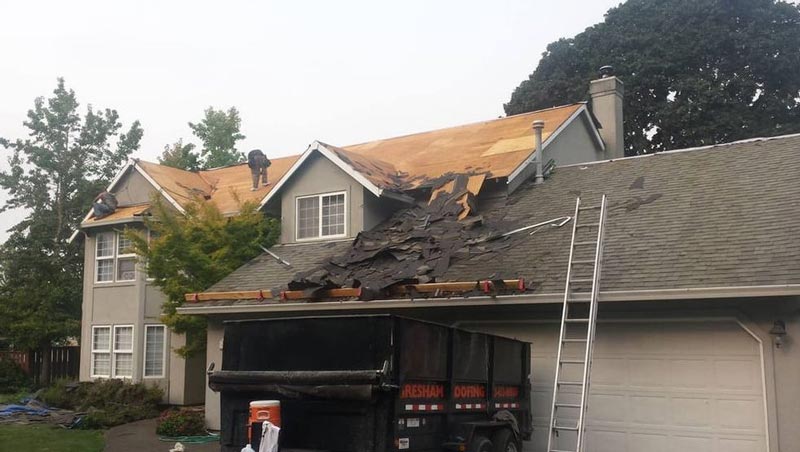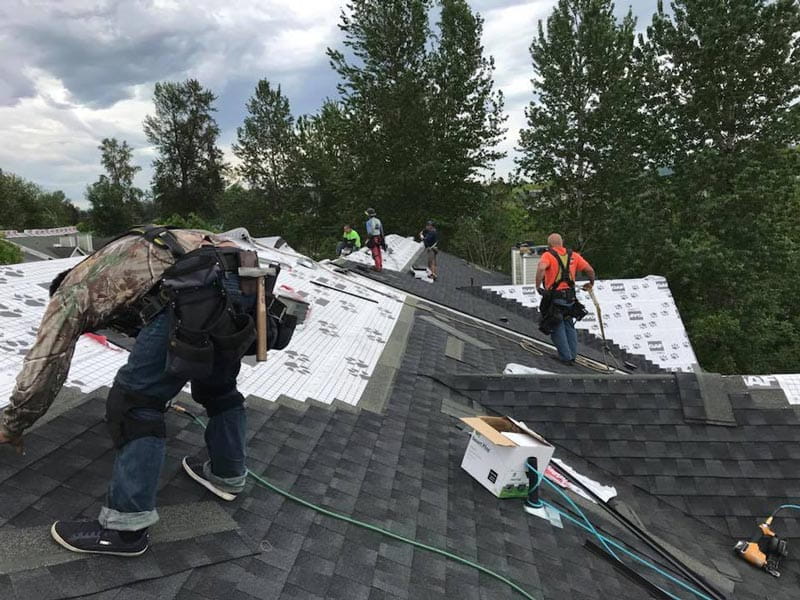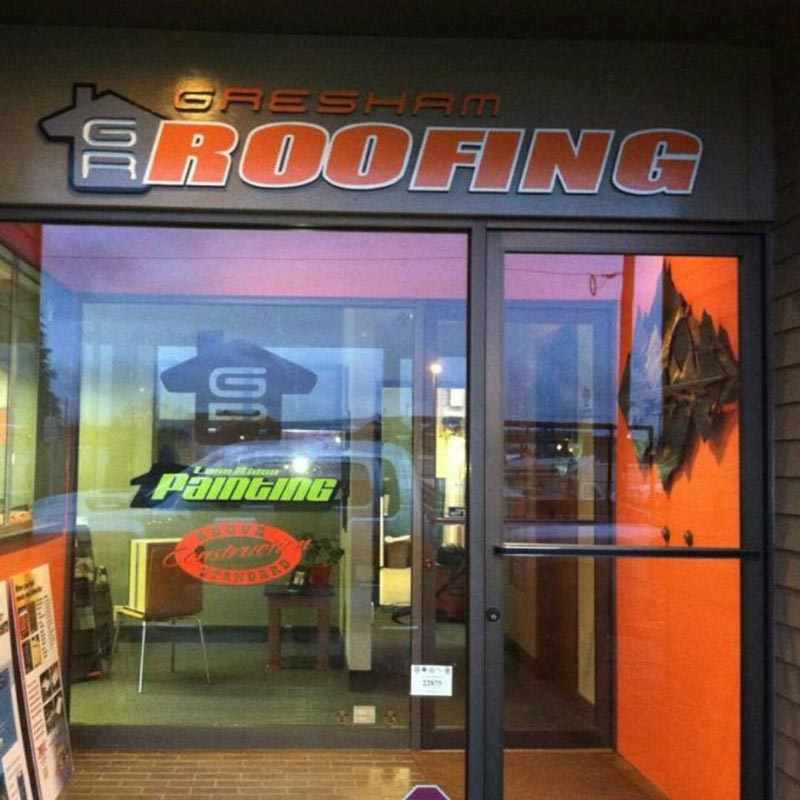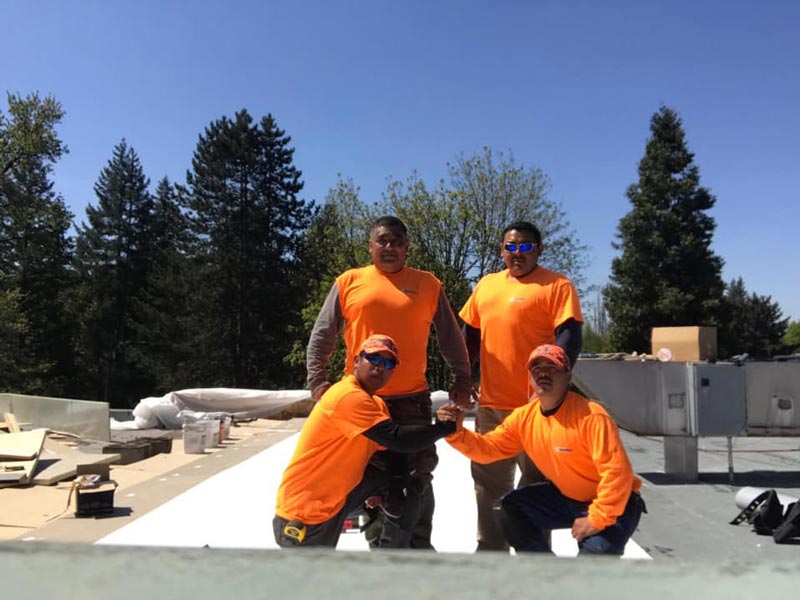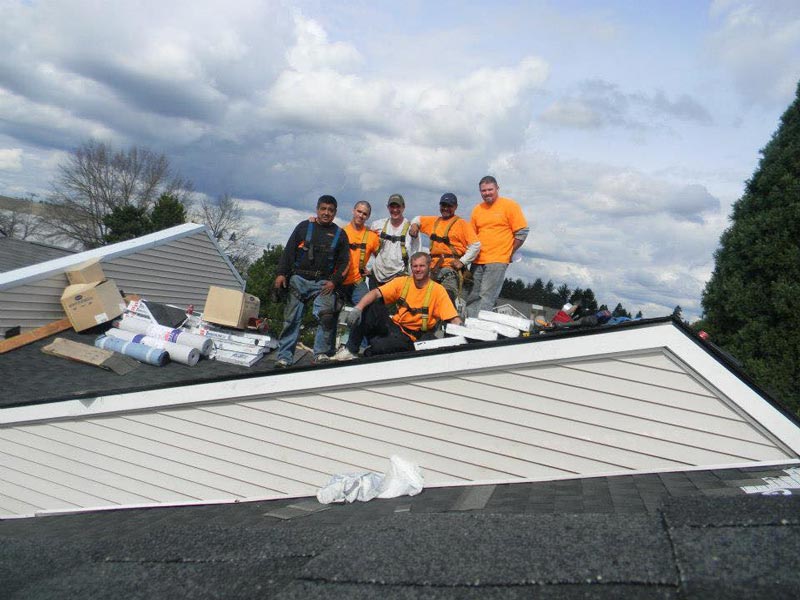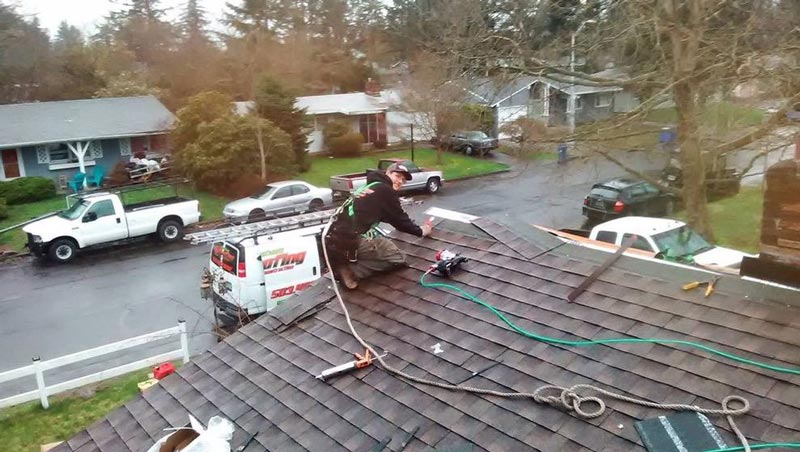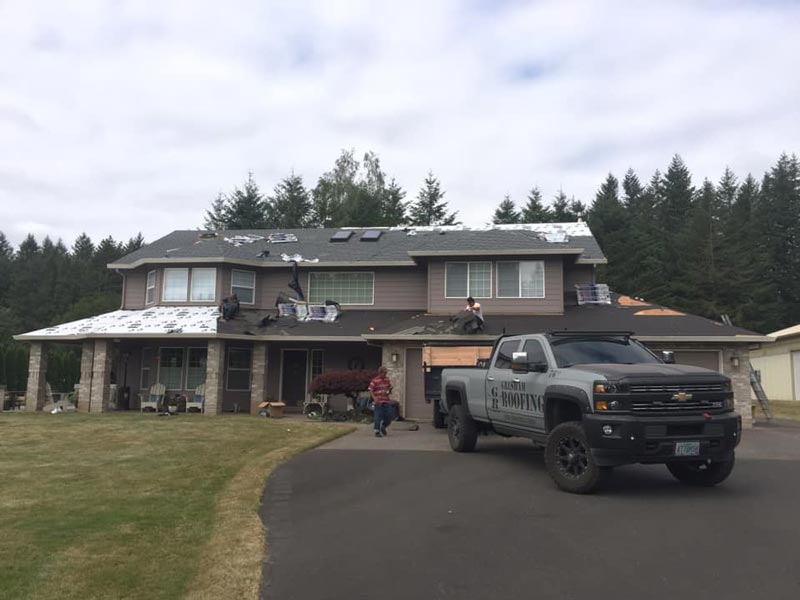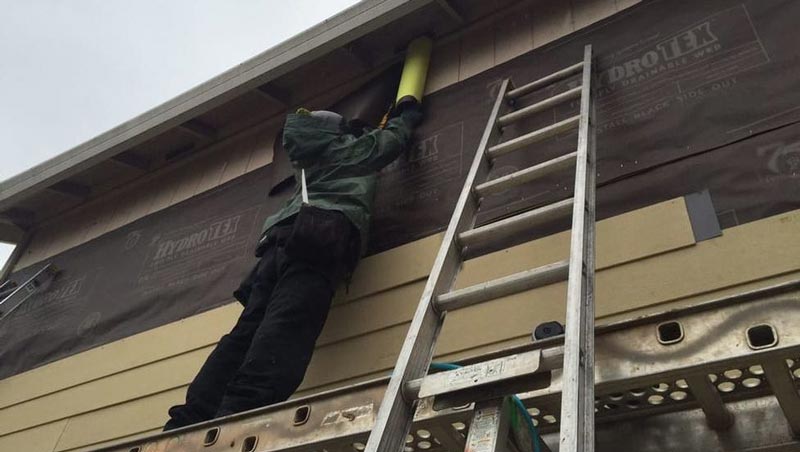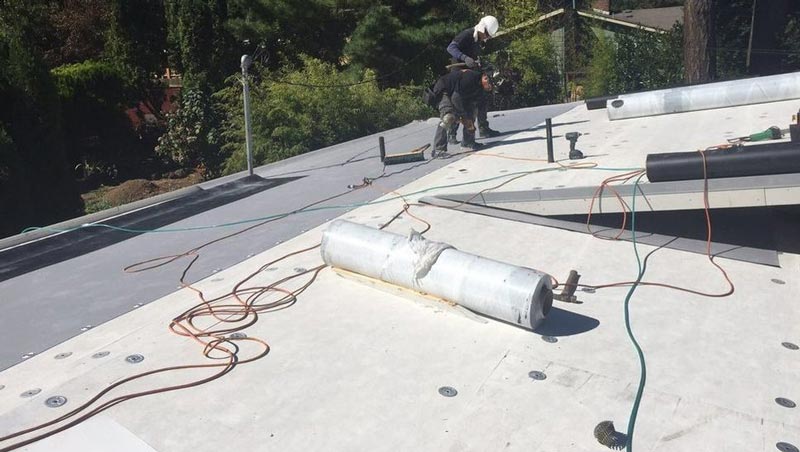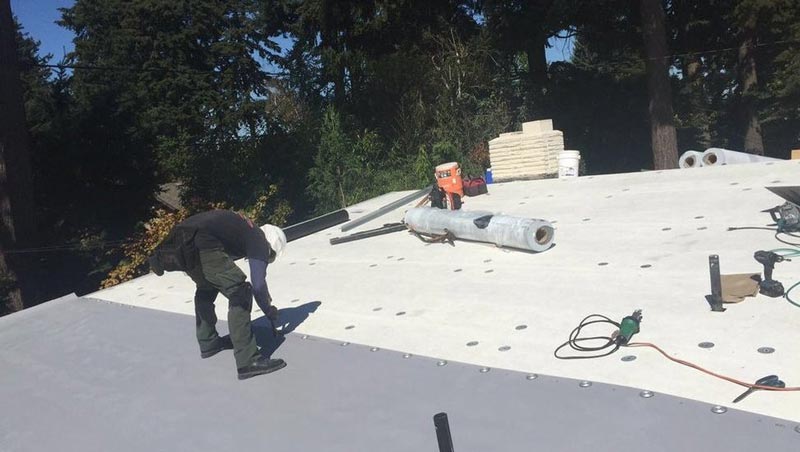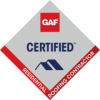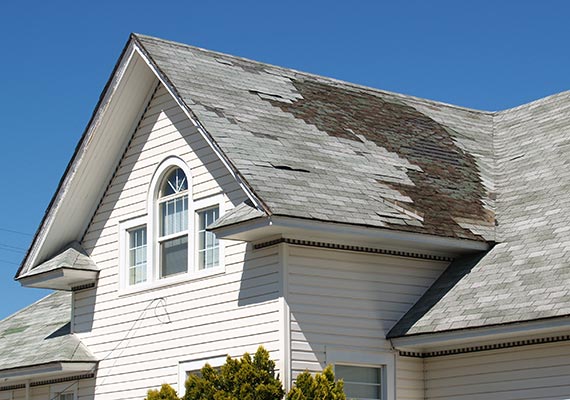
Your home’s roof is designed to protect and shield the rest of your home and personal property from the elements. However, weather-related incidents are often the leading cause of roof damage. From scorching summer sun to wet winter storms, it takes a constant beating. Understanding how different weather conditions impact your roof can help you spot potential issues early and take steps to prevent costly repairs. Are you wondering what you can do to minimize the effect the weather has on your shingles? Here’s a look at the most common weather-related roof problems, how to protect your home, and when it’s time to call professionals like Gresham Roofing.
How Sun and Heat Take a Toll on Shingles
Constant exposure to the sun’s UV rays and high heat in a poorly ventilated attic can cause roofing materials to degrade over time. Shingles can dry out, become brittle, and crack, leading to weak spots on your roof. This process, known as thermal shock, happens as materials expand in the heat and contract when temperatures cool down at night.
What You Can Do:
- Choose UV-Resistant Materials – When it’s time for a replacement, ask about shingles with UV-resistant granules.
- Schedule Regular Inspections – Professional roofers can spot early signs of heat damage before they become major problems and check for adequate attic ventilation.
Rain and Moisture Damage on Roofs
Persistent rain is a significant threat to any roof. If water isn’t draining correctly, it can seep under shingles and into your home’s structure. This can lead to rot, mold growth, and water damage to your ceilings and walls. It could be one event that causes a storm-damaged roof or a small leak that goes unnoticed over time. In either case, water in the home causes major issues.
What You Can Do:
- Keep Gutters Clean and Functional – Clogged gutters cause water to back up and overflow, potentially seeping under the roof edge.
- Check Your Attic – Look for signs of moisture, dark stains, or mold indicating a possible leak.
- Ensure Proper Sealing – Vents, chimneys, and skylights are common weak points. Make sure the flashing and sealant around them are intact.
Protecting Your Roof Against Wind
Wind damage to roof shingles frequently includes pieces that lift and tear off the roof boards, exposing the underlayment to the elements. However, wind is a double threat because it can also blow down heavy limbs and trees, which causes significant roof damage on impact. In areas prone to high winds, securing your roof is critical to preventing widespread damage during a storm.
What You Can Do:
- Secure or Replace Loose Shingles – Address any loose or damaged shingles before a storm hits.
- Consider Wind-Resistant Systems – If you live in a storm-prone area, investing in a roofing system rated for high winds can provide extra protection.
- Get a Post-Storm Inspection – Have a professional check for hidden damage after a major wind event.
Roof Problems Caused by Snow and Ice
The Portland, OR Metro area and Southwest WA don’t see much snow, but with extreme weather showing up more frequently across the globe, it’s important to know its effect on roofs. The weight of heavy snow can put significant strain on the structure. Melting in the sun and refreezing at night creates ice dams along the eaves. These dams block water from draining properly into gutters, forcing it back up under the shingles and into your home.
What You Can Do:
- Insulate Your Attic – A well-insulated attic keeps the roof surface cold, preventing snow from melting and forming ice dams.
- Remove Heavy Snow – Use a roof rake to carefully clear heavy snow buildup and reduce the structural load.
- Ensure Adequate Ventilation – Proper attic ventilation helps regulate temperature and prevent ice dam formation.
Hail’s Damaging Effects on Roofs
Hailstorms cause severe damage quickly. The impact from hail can create dents and cracks in shingles, compromising their protective layer. This damage might not be visible from the ground, but it can lead to leaks and shorten your roof’s lifespan.
What You Can Do:
- Install Impact-Resistant Shingles – These shingles are manufactured to withstand hail and can be a worthwhile investment in hail-prone regions.
- Inspect Your Roof After a Hailstorm – Even if you don’t see obvious damage, it’s wise to have a professional take a closer look.
- File Insurance Claims Promptly – Hail-damaged roof replacement is often covered by insurance. Contact your provider right away to start the claims process.
When It’s Time to Call the Professionals
Proactive maintenance is an excellent step, but the weather is unpredictable. If you’re concerned about a recent weather event, contact a storm damage roofer like the pros at Gresham Roofing for an inspection. Our experienced roofers can assess the condition and offer the best solution.

